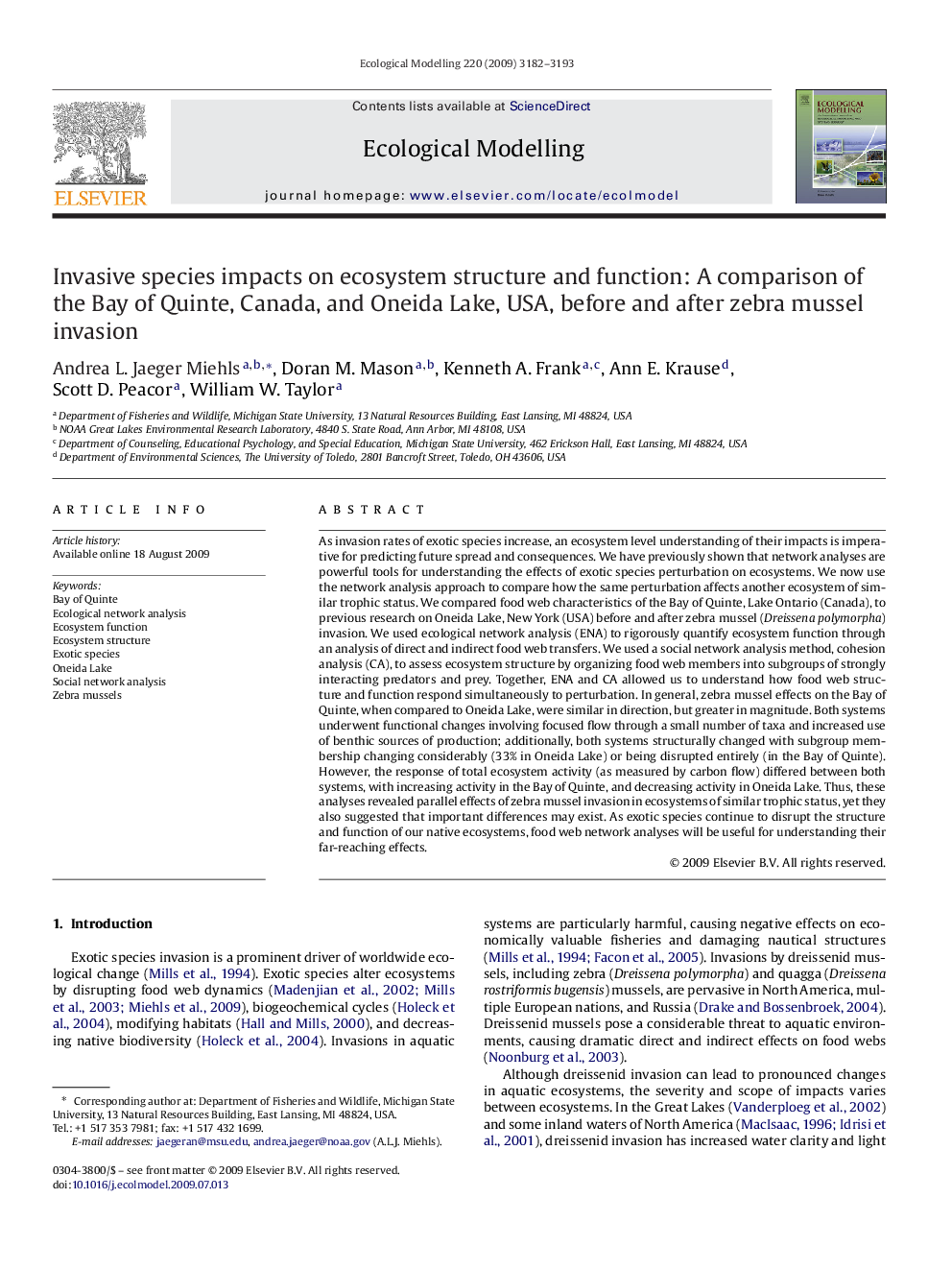| Article ID | Journal | Published Year | Pages | File Type |
|---|---|---|---|---|
| 4377533 | Ecological Modelling | 2009 | 12 Pages |
As invasion rates of exotic species increase, an ecosystem level understanding of their impacts is imperative for predicting future spread and consequences. We have previously shown that network analyses are powerful tools for understanding the effects of exotic species perturbation on ecosystems. We now use the network analysis approach to compare how the same perturbation affects another ecosystem of similar trophic status. We compared food web characteristics of the Bay of Quinte, Lake Ontario (Canada), to previous research on Oneida Lake, New York (USA) before and after zebra mussel (Dreissena polymorpha) invasion. We used ecological network analysis (ENA) to rigorously quantify ecosystem function through an analysis of direct and indirect food web transfers. We used a social network analysis method, cohesion analysis (CA), to assess ecosystem structure by organizing food web members into subgroups of strongly interacting predators and prey. Together, ENA and CA allowed us to understand how food web structure and function respond simultaneously to perturbation. In general, zebra mussel effects on the Bay of Quinte, when compared to Oneida Lake, were similar in direction, but greater in magnitude. Both systems underwent functional changes involving focused flow through a small number of taxa and increased use of benthic sources of production; additionally, both systems structurally changed with subgroup membership changing considerably (33% in Oneida Lake) or being disrupted entirely (in the Bay of Quinte). However, the response of total ecosystem activity (as measured by carbon flow) differed between both systems, with increasing activity in the Bay of Quinte, and decreasing activity in Oneida Lake. Thus, these analyses revealed parallel effects of zebra mussel invasion in ecosystems of similar trophic status, yet they also suggested that important differences may exist. As exotic species continue to disrupt the structure and function of our native ecosystems, food web network analyses will be useful for understanding their far-reaching effects.
